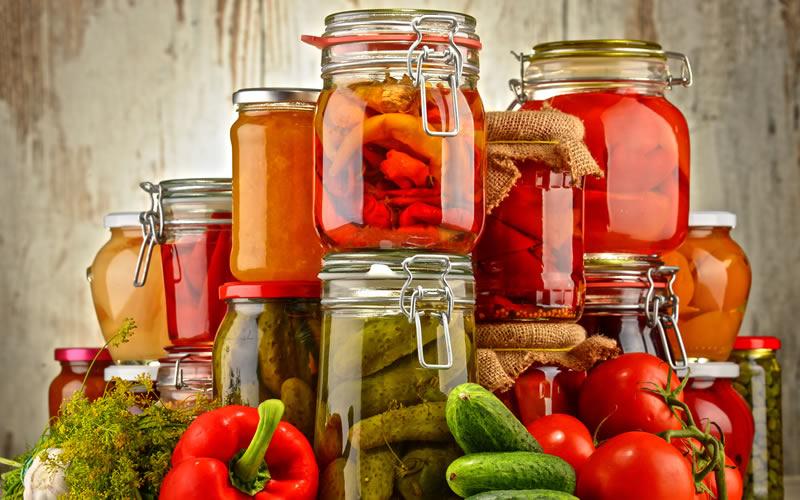Insights and Trends in the Global Food Preservatives Market: Enhancing Shelf Life and Ensuring Food Safety
The Food Preservatives Market to grow at highest pace owing to increased demand for better quality and longer shelf life food products
The food preservatives market has been growing at a significant rate over the past few years. Food preservatives are chemical or natural substances that are added to food products to inhibit spoilage and prevent pathogenic microbial contamination caused due to bacteria, moulds, yeast and fungi. Common food preservatives include salts, benzoates, nitrites and sulfites which help extend the shelf life of processed food items without significantly altering their taste and nutritional value. The growing demand for better quality, hygienic and longer shelf life food products among consumers is a major factor driving the growth of the global food preservatives market. The market is estimated to be valued at US$ 3.04 Bn in 2024 and is expected to exhibit a CAGR of 4.5% over the forecast period from 2023 to 2030.
Key Takeaways
Key players operating in the food preservatives market are BASF SE, Kerry Group Plc, Kemin Industries, Inc., DuPont Nutrition & Biosciences, ADM, Foodchem International Corporation, Corbion, Celanese Corporation, and Jungbunzlauer Suisse AG. These major companies are focussing on new product development and capacity expansion strategies to strengthen their market presence. The growing demand for processed and packaged food commodities along with increasing food safety concerns has led to higher utilization of various food preservatives over the years. Technological advancements in extraction and stabilization methods have allowed manufacturers to develop natural food preservatives with minimal impact on taste and nutritional value of food products.
Market Trends
Increased preference for clean label and natural food preservatives: With growing health consciousness, consumers are shifting from artificial to natural food preservatives. This has compelled manufacturers to offer clean label products using plant-based and mineral-based preservatives.
Rising demand for non-GMO and organic food options: The demand for non-GMO and organic food products is surging globally due to rising health concerns regarding genetically modified organisms. This has increased the demand for preservatives extracted from natural sources.
Market Opportunities
Expanding processed food industry in emerging economies: Countries like India, Brazil, China etc. are witnessing rapid urbanization and lifestyle changes leading to higher consumption of packaged and convenient food options. This presents lucrative growth opportunities for food preservatives market players in these regions.
Innovations in active and intelligent food packaging systems: Introduction of active packaging incorporating antimicrobials and advanced gas scavengers can help develop innovative shelf life extension solutions and open new growth avenues.
Impact of COVID-19 on Food Preservatives Market Growth
The COVID-19 pandemic has significantly impacted the growth of the food preservatives market globally. During the initial phases of the pandemic, lockdowns and mobility restrictions led to disruptions in the supply chain and logistics networks. This affected the production and distribution of food preservatives. As people stockpiled food products, the demand for preservatives also increased temporarily. However, with economic uncertainties and declining purchasing power, the demand saw a downtrend post the first wave of infections. Manufacturers faced challenges in terms of labor shortages, raw material procurement, and costs.
The pandemic highlighted the importance of shelf-stable and long-lasting food products. There was renewed focus on food safety and prevention of spoilage. The demand for preservatives in packaged foods, ready meals and frozen foods witnessed steady growth. The clean label trend also gained traction as consumers preferred products with natural preservatives. The inorganic growth strategies adopted by key players through expansions, collaborations and new product launches helped revive the market. With vaccination drives progressing worldwide, economic activities are recovering steadily. The food preservatives market is anticipated to get back on the upward growth trajectory in the coming years, supported by rising health-oriented consumer demands.
Regional Concentration of Food Preservatives Market
In terms of value, the food preservatives market in North America accounts for the largest share globally, estimated at over 30% in 2024. This can be attributed to the well-established food processing industry and rising consumption of packaged and convenience foods in countries like the United States and Canada. Europe ranks among the other top regions, driven by stringent food safety regulations and heightened clean label trends in major markets of Germany, France, UK and Italy.
Asia Pacific presents immense growth opportunities for food preservatives owing to the rapidly expanding food retail sector, growing middle-class population and their increasing disposable incomes in developing economies of India, China, Indonesia and Vietnam. Rapid urbanization, changing lifestyles and increasing awareness about the benefits of preservatives are fueling the demand growth in Asia Pacific region, which is anticipated to become the fastest growing regional market during the forecast period.
Expanding Geographical Markets for Food Preservatives
The food preservatives market in Latin America is witnessing steady expansion, led by Brazil which accounts for over 50% share in the region. Factors such as improving economic conditions, rising health consciousness and proliferation of processed food production are driving the future growth prospects. The market is also gaining traction in the Middle East and Africa supported by infrastructural developments in food value chain, evolving consumer preferences and expanding Food & Beverage industry footprint across countries like South Africa, GCC and North African nations. Overall, emerging areas in Asia Pacific and Latin America represent the most attractive untapped geographical regions for manufacturers to gain foothold and establish production facilities through strategic investments and partnerships.
